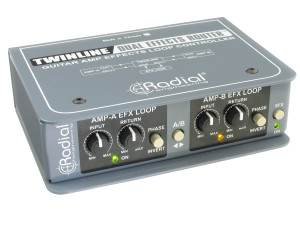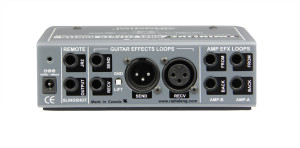Radial Engineering Releases Twinline Guitar Effects Router
Radial Engineering Ltd is solving yet another issue faced by guitarists that crave variety in their rig.
The Twinline allows a guitarist to share their pedal board between two different amplifiers
when using an amp’s rear-panel effects loop. The routing is done by using the two separate ¼” send, and return jacks on the Twinline. The effects router is offered with a choice of unbalanced ¼” jacks for typical guitar pedal routing, or balanced ¼” jacks for compatibility with rack-mounted outboard gear, and guitar amp-modeling devices. Switching between the two routes can be done with a standard AB or bypass switch, or the optional JR2 remote footswitch.
The Twinline from Radial is available now for $349 MSRP. Here are more details from Radial:
Twinline™ Effects loop interface for two amps.
- Shares your pedalboard between two amp loops
- Lets you optimise the signal path for each amp
- Works with pedals or balanced studio processors
- Can be remotely controlled using a footswitch
The Twinline can be thought of as a pedalboard switcher that lets you remotely toggle the effects from one amp’s effects loop to the other, thus allowing the guitarist to share his pedalboard between the two amps. To accomplish this, the Twinline is equipped with two amplifier effects loop circuits – each with separate send and receive levels to optimize the signal path for each amp’s effects loop. There is also a third effects loop for the pedalboard. This features a choice of unbalanced ¼” connectors for typical guitar pedals or balanced XLR connections for studio effects. A remote control input is used to toggle the active amplifier’s effects loop via a contact closure using a MIDI system or latching footswitch. When used with the optional Radial JR2™ remote, this adds the ability to bypass the effects completely.
As with all Radial products, the Twinline is made from heavy duty 14 gauge steel for ultimate durability and maximum shielding against stray magnetic fields while the book-end design creates a protective zone around the controls and switches. Inside, 100% discrete class-A electronics deliver optimal sonics as it buffers the circuit while transformer isolation eliminates troublesome ground loops that can introduce hum and buzz if left unchecked.
Please note: When you buy products through links on this page, we may earn an affiliate commission.








